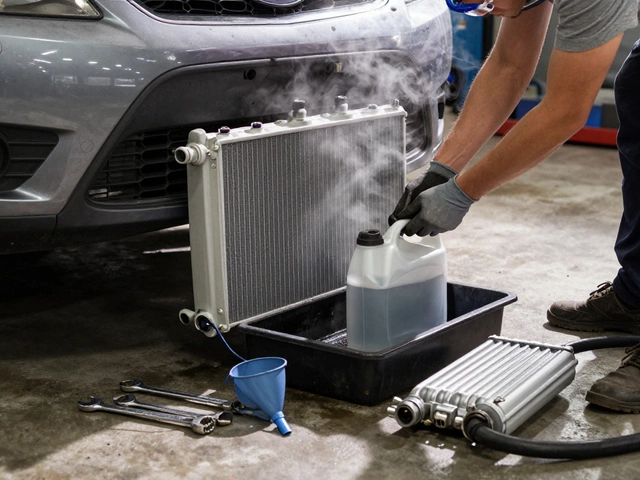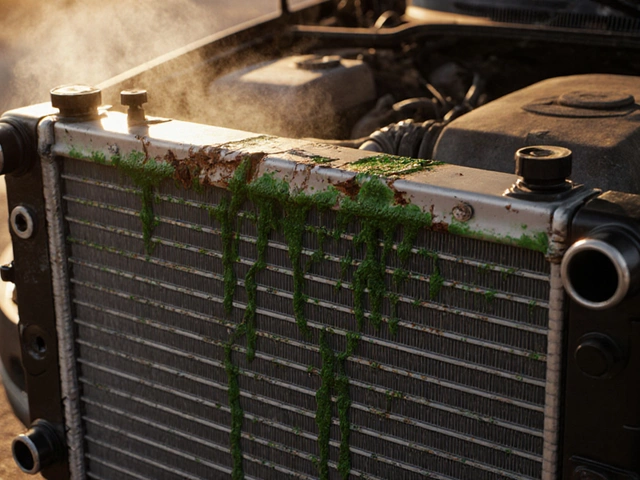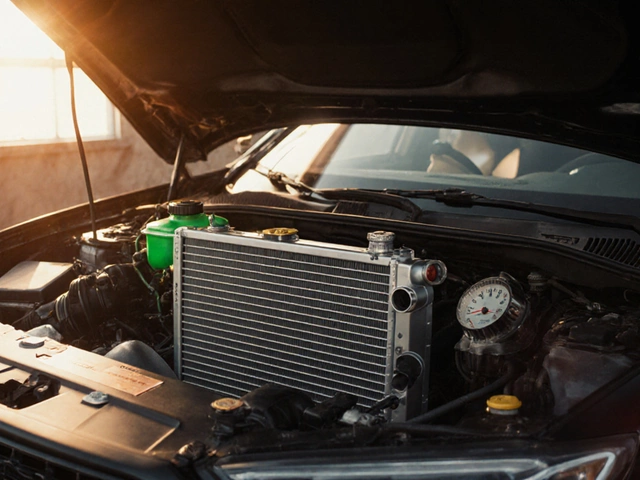Radiator Lifespan Calculator
Calculate Your Radiator's Remaining Life
This tool estimates your radiator's expected lifespan based on key factors from our expert guide.
Estimated Results
Enter your information above to see your radiator's estimated lifespan.
Key Takeaways
- Most car radiators last between 8 and 12 years or 100,000‑150,000 miles, but factors like climate and coolant type can shift that range.
- Aluminum radiators generally out‑last plastic‑core units, especially in hot or salty environments.
- Regular coolant flushes, pressure‑cap checks, and visual inspections of hoses can add 2‑3 years to a radiator’s life.
- Early warning signs include overheating, coolant leaks, and a noisy fan; ignore them at your own risk.
- When replacement is needed, budgeting $150‑$400 for a standard unit and $400‑$800 for premium models helps avoid surprise costs.
When you hear that a car’s engine is heating up, the first suspect is often the Car radiator is the heat‑exchanger that transfers engine heat to the ambient air, keeping the engine within its safe operating temperature range. Knowing car radiator lifespan lets you plan maintenance, budget for replacements, and avoid costly breakdowns. Below we break down everything you need to know - from average mileage to the tiny details that can shave years off the part.
Typical Lifespan: What the Numbers Say
Manufacturers rarely publish a hard‑stop mileage for radiators, but field data from repair shops and fleet operators converges on a useful range:
- Average mileage: 100,000 - 150,000 miles.
- Average years: 8 - 12 years for most passenger cars.
- Heavy‑duty trucks and performance cars often see earlier wear due to higher thermal loads.
These numbers assume normal driving conditions, regular coolant changes, and a functional cooling system. If you live in a coastal city with salty air, you might see the lower end of the range.
Key Players in the Cooling System
The radiator doesn’t work in isolation. It’s part of a broader Cooling system that includes several components that influence longevity.
First, Engine coolant (sometimes called antifreeze) circulates through the radiator, absorbing heat. Over time, coolant can become acidic, corroding metal parts. A typical coolant change schedule is every 30,000 - 50,000 miles or every 2‑3 years, whichever comes first.
The Thermostat regulates flow - it stays closed until the engine hits the right temperature, then opens to let coolant pass through the radiator. A stuck thermostat can cause excessive heat buildup, stressing the radiator core.
Finally, the Radiator fan draws air when the vehicle isn’t moving fast enough. A failing fan forces the radiator to work harder, accelerating wear.
Materials Matter: Aluminum vs. Plastic‑Core Radiators
Radiators come in a few common constructions. Understanding the material helps you predict durability.
Aluminum radiator cores are lightweight, have excellent heat‑transfer properties, and resist corrosion. They typically last 10‑15 years when paired with proper coolant.
In contrast, Plastic‑core radiator (often using high‑strength polymer housings) is cheaper and lighter but can become brittle over time, especially in extreme temperatures. Expect 5‑8 years for these units.
Both types rely on Radiator hoses to move fluid in and out. Hoses degrade from heat cycling and chemical exposure; inspect them for cracks or bulges every 12 months.
The internal network of thin metal tubes is called the Radiator core. Clogging from rust or mineral deposits reduces efficiency and forces the radiator to work beyond its design limits.
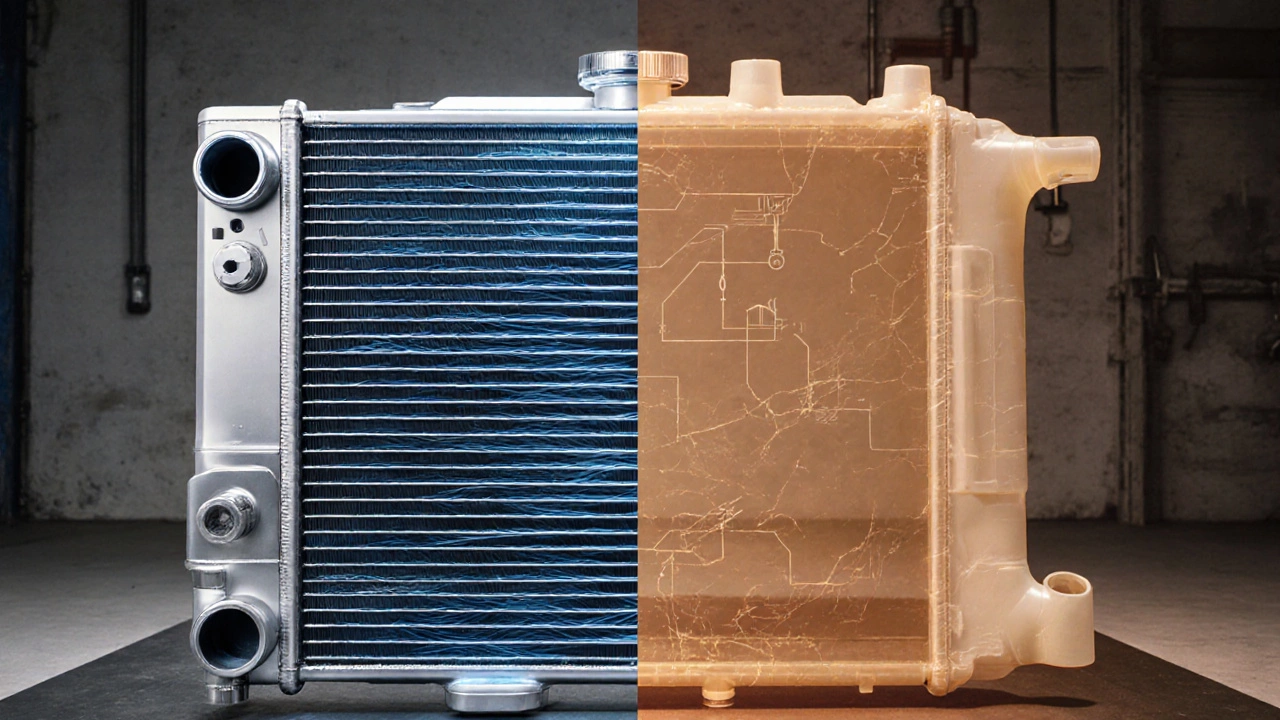
Factors That Accelerate Wear
Even the best‑built radiator can see its life cut short if certain conditions aren’t managed:
- Extreme climate: Very hot summers or icy winters cause repeated expansion and contraction, leading to micro‑cracks.
- Poor coolant quality: Using non‑spec coolant or failing to flush can cause corrosion and overheating.
- Heavy loads: Towing, off‑road use, or frequent stop‑and‑go traffic taxes the system.
- Incorrect pressure‑cap: The radiator pressure cap maintains system pressure; a weak or wrong‑rated cap reduces boiling point, forcing the radiator to dissipate more heat.
- Salt exposure: Coastal roads spray salty mist that accelerates rust on metal parts, especially in aluminum units if the coolant isn’t corrosion‑inhibited.
Tracking these factors helps you decide whether a routine replacement or a targeted repair is the smarter move.
Early Warning Signs: Spot the Problems Before They Cost a Fortune
Don’t wait for a full engine shutdown. Look for these subtle clues:
- Temperature gauge spikes: Even a few degrees above normal may indicate reduced heat‑exchange efficiency.
- Coolant puddles: Leaks often appear under the front of the vehicle; check for green, orange, or pink fluid.
- Steam from the engine bay: This is a clear sign of overheating; the radiator may be blocked.
- Unusual fan noise: A fan that runs continuously or sounds strained suggests the radiator isn’t cooling enough.
- Sweet smell: Overheating coolant releases a sweet odor; an ozone‑like scent can mean a leaking radiator cap.
Addressing these signs early-by flushing coolant, tightening clamps, or swapping a pressure cap-can extend the radiator’s useful life by years.
Maintenance Checklist to Maximise Longevity
- Inspect hoses and clamps every 12 months; replace any showing cracks or swelling.
- Check the radiator pressure cap for proper rating (usually 15‑16 psi) and replace if the spring feels weak.
- Flush and replace coolant per the manufacturer’s schedule; use the correct mix (typically 50/50 ethylene‑glycol).
- Verify the thermostat opens at the specified temperature (usually 195 °F / 90 °C).
- Clean the exterior fins with a soft brush; remove debris that blocks airflow.
- Run the engine at operating temperature for at least 10 minutes after each coolant change to purge air pockets.
- Listen for fan operation; replace a noisy or non‑functioning fan promptly.
Follow this list during routine service appointments, and you’ll likely see an extra 2‑4 years on the radiator clock.
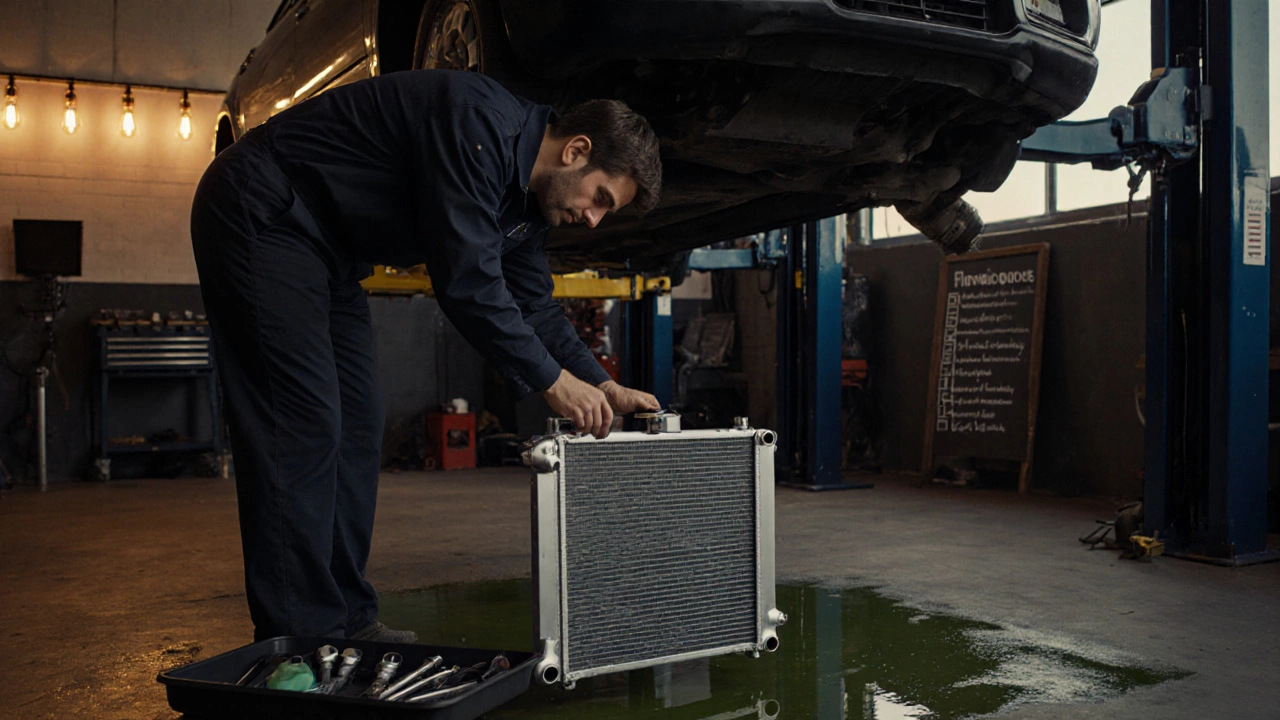
When Replacement Becomes Inevitable
Even diligent owners hit the replacement point. Typical triggers include:
- Visible corrosion or rust on the radiator core.
- Repeated overheating despite fresh coolant.
- Physical damage from road debris or accidents.
- Age beyond 12 years for aluminum, 8 years for plastic‑core.
Choosing a replacement involves weighing cost, quality, and vehicle compatibility. Below is a quick comparison of common options.
| Radiator Type | Typical Lifespan (miles) | Typical Lifespan (years) | Best Suited For |
|---|---|---|---|
| Aluminum core | 120,000 - 180,000 | 10 - 15 | Sedans, SUVs in moderate climates |
| Plastic core (polymer) | 80,000 - 120,000 | 5 - 8 | Compact cars, budget models |
| Heavy‑duty aluminum | 150,000 + | 12 - 20 | Trucks, performance vehicles |
Cost Overview
Pricing varies by vehicle and radiator material. Rough estimates for replacement (parts plus labor) in the UK are:
- Standard aluminum unit: £120 - £250 parts; £80 - £150 labor.
- Premium high‑flow aluminum (performance): £300 - £500 parts; £150 - £250 labor.
- Plastic‑core budget unit: £80 - £150 parts; £70 - £130 labor.
Adding a coolant flush (£30‑£50) often prevents premature failure, making it a cost‑effective preventive measure.
Frequently Asked Questions
How often should I replace the coolant?
Most manufacturers recommend a coolant flush every 30,000‑50,000 miles or every 2‑3 years, whichever comes first. Using the correct coolant mix is essential to protect the radiator and other cooling components.
Can I drive with a leaking radiator?
It’s risky. Even a small leak can lead to overheating, engine damage, and costly repairs. If you notice coolant on the ground, pull over, check the level, and arrange a tow if the level is low.
What’s the difference between a pressurized and non‑pressurized radiator?
All modern radiators are pressurized via a cap. A non‑pressurized system would boil at a lower temperature, causing overheating. The cap maintains pressure, raising the coolant’s boiling point and improving heat transfer.
Is an aluminum radiator always better than a plastic one?
Aluminum offers superior heat transfer and corrosion resistance, but it’s pricier. Plastic cores are lighter and cheaper, making them common in entry‑level models. Choose based on your climate, driving habits, and budget.
How can I tell if the radiator fan is failing?
If the fan runs continuously, makes grinding noises, or doesn’t turn on at high engine temps, it’s likely defective. A failing fan forces the radiator to work harder, shortening its life.
By keeping an eye on the cooling system, performing regular maintenance, and knowing the signs of wear, you can keep your car running smoothly for years without a surprise radiator swap. Remember, the radiator is the heart of your engine’s temperature control - treat it right, and it’ll take care of you.
